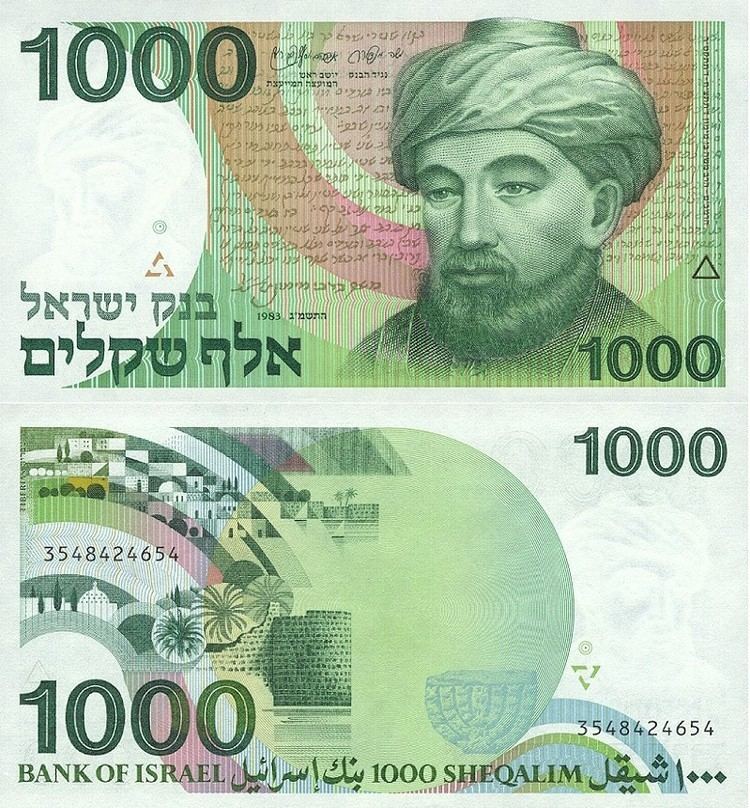Code ILR Plural shqalim Symbol or IS | 1/100 new agora new agora new agorot | |
 | ||
Banknotes IS1, IS5, IS10, IS50, IS100, IS500, IS1000, IS5000, IS10,000 | ||
The old Shekel, known at the time as the Shekel (Hebrew: שקל, formally Sheqel, pl. שקלים, Sheqalim; Arabic: شيقل, šīqal) was the currency of the State of Israel between 24 February 1980 and 31 December 1985. It was replaced by the Israeli New Shekel at a ratio of 1000:1 on 1 January 1986. The old Shekel was short-lived due to its hyperinflation. The old Shekel was subdivided into 100 New Agorot (אגורות חדשות). The shekel sign was , although it was more commonly denominated as S or IS.
Contents
The Israeli Shekel replaced the Israeli pound which was used until 24 February 1980.
History
Development of a new currency to be known as the Shekel (properly, Sheqel) was approved by the Israeli Knesset on 4 June 1969. The governors of the Bank of Israel did not consider the time ripe until November 1977, when studies for its implementation began. Prime Minister Menachem Begin and Minister of Finance Simcha Erlich approved a proposal to redenominate the Israeli pound in May 1978; the proposal called for the currency to be exactly similar except for the removal of a zero from the inflated pound and agorot denominations.
The Shekel and New Agora were declared legal tender on 22 February 1980 and went into circulation two days later. Initial denominations were IS 1, 5, 10, and 50, but over the next five years inflation led to another five: IS 100, 500, 1000, 5000, and 10 000. New coin and bill designs were selected through competitions among graphic designers. Beginning with the IS 500 issue, the size of the notes were standardized (76 mm × 138 mm or 3 in × 5 in) and the denominations differentiated by color and design. A transparent part was added to discourage counterfeiting and signs for the blind were added. The New Israeli Shekel replaced the shekel following its hyperinflation. It became the currency of Israel on 4 September 1985, removing three zeros from the old notes.
Presently, the old Shekel is no longer in circulation and is not regarded as legal tender by the Bank of Israel.
Coins
The initial series of coins in 1980 were for the denominations of 1, 5, and 10 New Agorot and IS ½. These preserved the appearance of the similar coins under the pound but were worth 10 times as much. The initial run were struck at foreign mints in order to preserve the secrecy of the coming currency conversion. IS 1 coins were introduced in 1981; IS 5 and 10 coins in 1982; and IS 50 and 100 coins in 1984.
The 1 and 5 New Agorot coins were aluminum; the 10 New Agorot and IS ½, 1, and 100 coins cupronickel; the IS 5 and 50 coins an alloy of copper, aluminum, and nickel; and the IS 10 cupro-aluminum.
